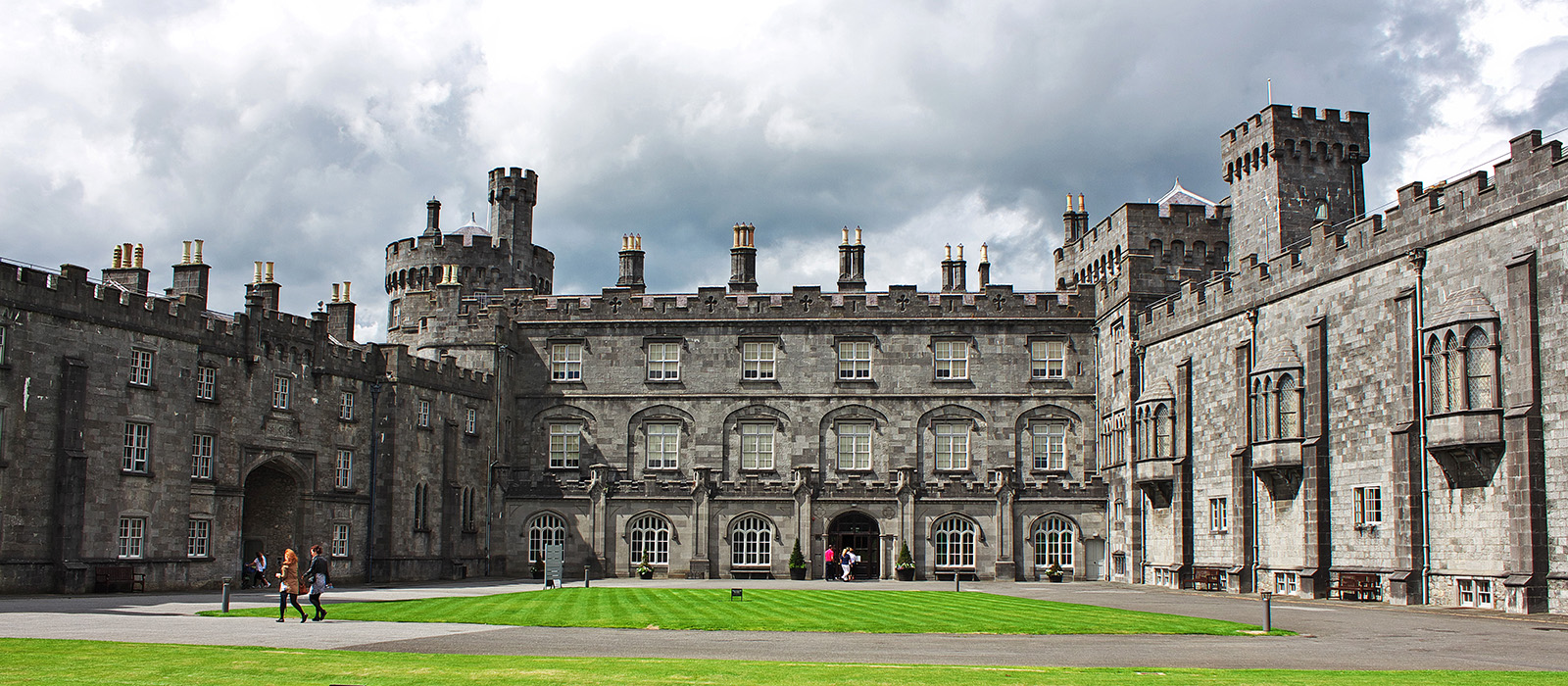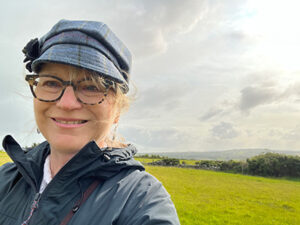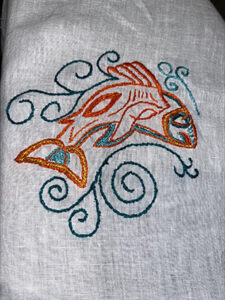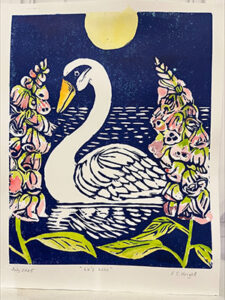Carroll Professor Sees Travel Study Program from a New Perspective


As both a coordinator of and a student in Carroll’s Travel Study program, Carroll English Professor Siobhan Wright recently was able to experience one of these global journeys from two perspectives—guiding travelers through iconic destinations while completing her own coursework along the way.
Read how her unique dual role gave her a rare insight into how the program transforms lives, including her own.
Q: When did Carroll’s Travel Study program launch?
Siobhan Wright: The program started in about 1992 or 1993. It was started by former faculty members in the English department, Anne Weber and Suzanne Dixon. They ran that program for a good ten years, at the end of which they recruited Associate Professor of English David Fell. I started as a coordinator in 2014. My first trip with the program was to England.
You have to be 18 years old to travel independently, but you can travel at 14 if you’re with an adult. Travelers go all the way up to people in their 80s. So it extends from current students to the grandparents of students. It’s a really diverse group of people in terms of ability and age, interests and education. Sometimes families go on the tour as small groups, such as siblings or mother/daughter or father/daughter.
We design the trips closely with a travel company, Witte. They give us more mid-range accommodations, and it never splits up the group on different flights. You also get a Blue Ribbon Tour Guide, which is phenomenal. These tour guides graduated from elite institutions and have gone through a tour guide program that is extraordinarily rigorous. You have to know all of the historical locations of the country that you’re in. So a Blue Ribbon Tour Guide is like having a scholar who also likes good food. They’re inspiring people.
Q: How many people typically go on a trip?
SW: Usually between 30 and 40. We almost always sell out or come pretty close to it.
Q: How do you decide where you’re going to go each year?
SW: In the world of travel guides, there are tiers of locations. Tier 1 locations are the countries with iconic sites, often the first places people name when they want to travel—the Eiffel Tower in Paris, Big Ben in London, the Colosseum in Rome, the Parthenon in Athens. Ireland too has become a Tier 1. These Tier 1 locations tend to be the ones we go to. As for how we select them, we ask the previous travelers where they want to go, and then we choose one and map out an itinerary.
Our travelers come from three demographics. Credit students are prioritized when choosing a location. We think about the trip in terms of what our Travel Study students want to see first, which is very much the Tier 1 locations. Our second demographic is the broader community, and then the third is internal. About 1/3 of the travelers work for the College. We have a significant number of repeat travelers. I’d say at least a third of the people on a trip have traveled with us before.
Q: Travel Study is called an independent study course. What does that mean?
SW: It means you can earn college credit for the trip. It’s three credit hours. When they sign up, the Travel Study students meet with their assigned professor ahead of time. Their professor will ask them, “What are you getting a degree in?” The trip is then tailored to what the students are interested in. There are actually four versions of the Travel Study class: English, Humanities, Art, and History. So it’s very humanities-driven.
As a Visual Arts student going on the Ireland trip, I did a lot of pre-trip research work, like reading an approved textbook. On the trip, I kept a drawing journal on the tour and data for individual works of arts with artist statements. After I returned, I gave a presentation to my professor, Carroll’s Arts & Humanities Chair Jessi Hardesty.
Q: What do you most enjoy about being a coordinator for the Travel Study program?
SW: Bonding with other people. It’s the kind of experience that you only have when you’re immersed with other people who are collected together for one purpose.
Q: What are the benefits of the Travel Study program, for those doing it for credit?
SW: There’s nothing more educational than traveling abroad. You are divorced from your home turf. I’ll give you an example from the very first trip to England. We had a girl who had never been any further than Frederick, MD. She’d never been in a big city. She’d never been on public transportation. By the end of the trip, she was navigating the crowds with ease. She was transformed. I saw that with a number of students. It’s an amazing experience.
Q: What was it like being both a coordinator and a student on the past trip?
SW: Most people did not know I was enrolled in the Travel Study course. I pretty much kept the sketchbook off to the side, so that when people asked, “What are you doing?,” I’m like, “I’m just learning to draw.” I was still a coordinator there, but the things that I did as a student were kind of invisible to them. I was a secret student!
Q: As a student in the Travel Study program, what was the overall experience like for you?

SW: It has been a such a treasured time being an art student here. I took the Travel Study course to fulfill an art history requirement in the Visual Arts degree program. Before the trip I read a book on the Irish Arts and Crafts Movement, which was the topic for my course that we used to determine what I would see in Ireland.
The Irish Arts and Crafts Movement parallels the broader Arts and Crafts Movement of William Morris at the turn of the 20th century. Basically it’s a revolt against technology. Everything then was getting automated; chairs started being made in factories by an assembly line of people. In Ireland, they were worried about losing the legacy of artistry. Irish poet W.B. Yeats had a collective of artists that included his brother and iconic painter Jack Yeats and both of his sisters, one of them educated in embroidery, the other in printmaking. There was such an effort to create an Irish iconography and an Irish personality that went beyond round towers and shamrocks. Definitely gave me subject matter to consider for my own artwork. It certainly informed how I understand the role of visual art and literature in creating a cultural identity.
Q: What made the most impact on you from your Ireland trip?

SW: The thing that I think was the most enthralling was that there’s this concerted effort to preserve the artistic legacy. I have examples of hand-painted linen that’s being sold in Hillsborough Castle in Northern Ireland. And the printmaking world is vibrant in Ireland as well. We don’t think of that as still an active medium for artistic expression. The local artists there today continue to live the legacy that was left for them. That’s very inspiring. I can still hop on that train and be an active part of that Irish legacy with my artwork too.
Q: What advice would you give the students considering doing Travel Study?
SW: The hardest part is narrowing the scope of what you’re going to look at. You really need help in the beginning finding a focus. I had to know a few things before I left on the trip so I could ask the right questions. Reading the assigned textbook ahead of time helps you prepare for the trip, figure out what you’re going to do, and better understand the projects, such as the presentation that you’ll do at the at the end of it. It gives you a framework for digesting what you’re seeing. It’s a wonderful exercise in designing your own learning, but with a lot of guardrails so you don’t get off track. It’s enriched me, given me something else to appreciate in the world.
See the World with Carroll
Study a topic you’re interested in on location or just come with us to have fun!